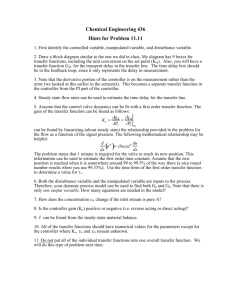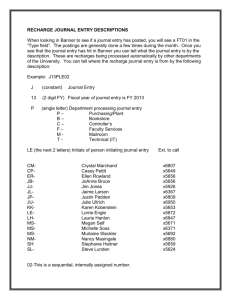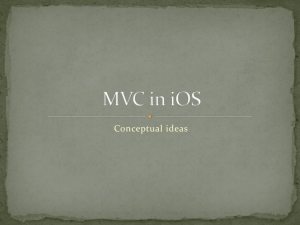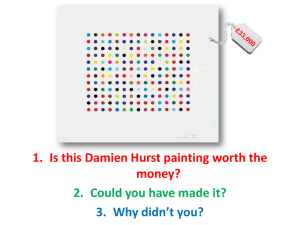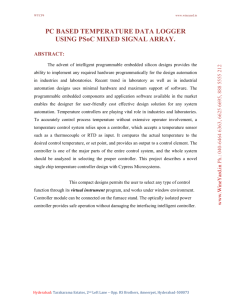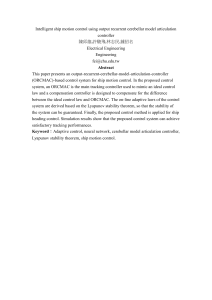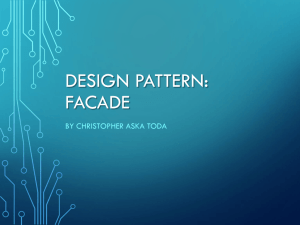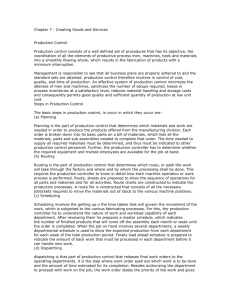CPSC 871
advertisement
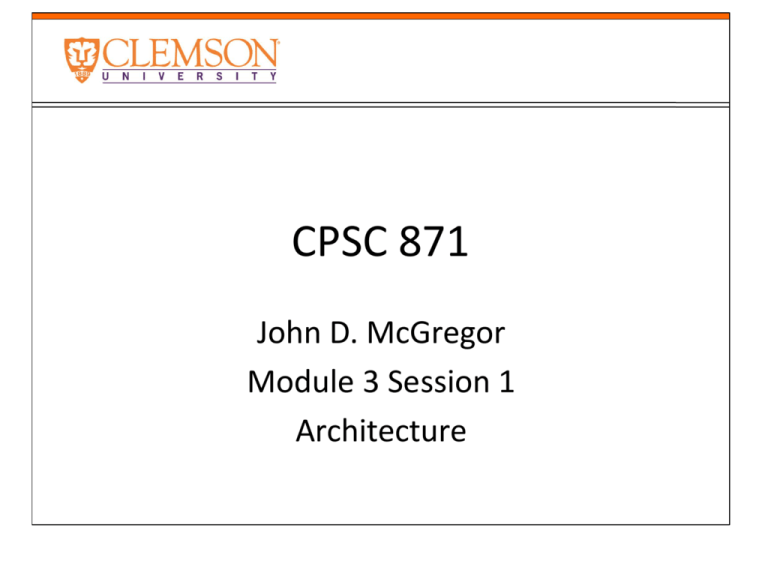
CPSC 871 John D. McGregor Module 3 Session 1 Architecture Session Objectives • Give an overview of software architecture principles Software architecture • The software architecture of a program or computing system is the structure or structures of the system, which comprise software elements, the externally visible properties of those elements, and the relationships among them. Software Architecture in Practice (2nd edition), Bass, Clements, Kazman; Addison-Wesley 2003 Warning!! The following single pictures are NOT architectures but simplified architecture cartoons. Connected Services http://msdn.microsoft.com/en-us/library/aa306115.aspx Android open architecture Eclipse architecture Essential elements • Components - a unit in which some program logic resides – should be a single concept • Connectors – joins two components via some relationship – data or control or both flow over the connector from one component to the other • Ports – a device on a component that allows data/control to flow into or out of the component • Illustrated using the AADL Architecture actions • The architect forms concepts that are contained in components and connects components that – Need data from the other component – Is the next piece of work to be done – Will refine what has already been done – And many other things • Components often are formed to satisfy a functional requirement Quality attributes • How the components are formed and how they are connected affects the quality attributes • The larger a component, the more complex it is • The more public its internals are the more testable it is • The more connectors there are the less maintainable the system is Flows • The architect does not do detailed design within a certain level of component so the architecture simply shows a flow through from an in port to an out port System implementation S1.impl C1 flow path F5 Process P2 C3 flow path F7 Process P1 C5 Styles • An architecture style is a pattern that is repeated from one system to another because it solves a standard problem. • A style is like a design pattern but on a higher, more abstract level. Example - Layered • Many systems use the “layered” pattern as an underlying structure. The architecture for my infotainment example begins as a layered system. • “Layered” requires that an element in one layer only communicate with elements in an adjacent layer. All relations either go up or down but not a mixture. • This improves several attributes including maintainability, testability, and portability. • The figure on the next page shows a layered architecture in which “uses” is the relationship. • A component can use what is below it in the figure but can not use what is above it. Infotainment Architecture http://www.drdobbs.com/embedded-systems/222600438;jsessionid=2CWUXIXKB5KHRQE1GHRSKH4ATMY32JVN Interactive systems • Many of the software systems we develop are interactive or reactive. • An action is taken that modifies the state of the system and the new state is reflected in what the user sees on the screen. • Menus change, graphics change, text changes. • There are usually multiple windows and changes may be made in several of these. • A popular architecture for this is Model/View/Controller MVC • Model encapsulates all data • View shows some of the data; may have several views at the same time • Controller responds to external events such as mouse clicks • Enhances modularity, modifiability, portability but not performance Java Beans Application Views and Viewpoints • One entity, three views, three different impressions • This is why we call the single picture of an architecture a cartoon • We needs as many different views as are necessary to communicate the complete picture Views and Viewpoints - 2 • A view is a representation of one or more structural aspects of an architecture that illustrates how the architecture addresses one or more concerns held by one or more of its stakeholders. [IEEE 1471] • A viewpoint is a collection of patterns, templates, and conventions for constructing one type of view. It defines the stakeholders whose concerns are reflected in the viewpoint and the guidelines, principles, and template models for constructing its views. [IEEE 1471] • The multiple pages in a building’s blueprint are different views from different viewpoints. Standard Viewpoints • Functional – what does the system do – The use case diagrams give one view • Information – what does the system do it to – class diagram gives data structures – sequence diagrams give flow of data • Concurrency – how is work on the data sequenced – sequence and activity diagrams Architecture process • Input => functional and non-functional requirements • Generate quality attribute scenarios • Have stakeholders prioritize them • Choose high level style • Begin a recursive decent of decomposition • When appropriate level of detail is reached evaluate the architecture against the scenarios Structure of scenario • Source of stimulus (e.g., human, computer system, etc.) • Stimulus – a condition that needs to be considered • Environment - what are the conditions when the stimulus occurs? • Artifact – what elements of the system are stimulated. • Response – the activity undertaken after arrival of the stimulus • Response measure – when the response occurs it should be measurable so that the requirement can be tested. Performance scenario • • • • • • Source of stimulus – typically an actor – Any user Stimulus – clicks on save button Environment – data has been entered into a matrix editor Artifact – data matrix Response – the data is written to the current file Response measure – takes less than 2 seconds to write • What other attributes for our problem? Decomposition • Our value computation is an interactive system. So we can start with MVC from slide 16 and decompose from there. Controller Controller Controller Controller View Model System menu Properties editor Controller Controller Controller Controller System menu Data Editor Properties editor Data Editor Editor Model System Model Model Extension Controller Controller Controller Controller System menu Data Editor Editor Model System Model Properties editor Controller Controller Controller Controller System menu Data Editor Properties editor Editor Model System Model DataBase Design Structure Matrix DSM model view model x view 1 x controller 1 1 controller x Controller View Model Reference architectures • A reference architecture is the architecture for a family of systems instead of just one. • Defining a reference architecture involves looking for those common elements across all products in the family. • The reference architecture often defines a standard set of viewpoints to be used in documenting the product specific architecture. DoD Reference Architecture • This link points to a description of the DoD Reference Architecture • http://dodcio.defense.gov/sites/diea/product s/Ref_Archi_Description_Final_v1_18Jun10.pd f • The document also points to other reference architectures. Reference architecture
